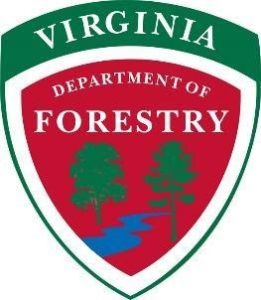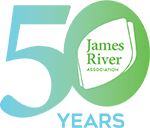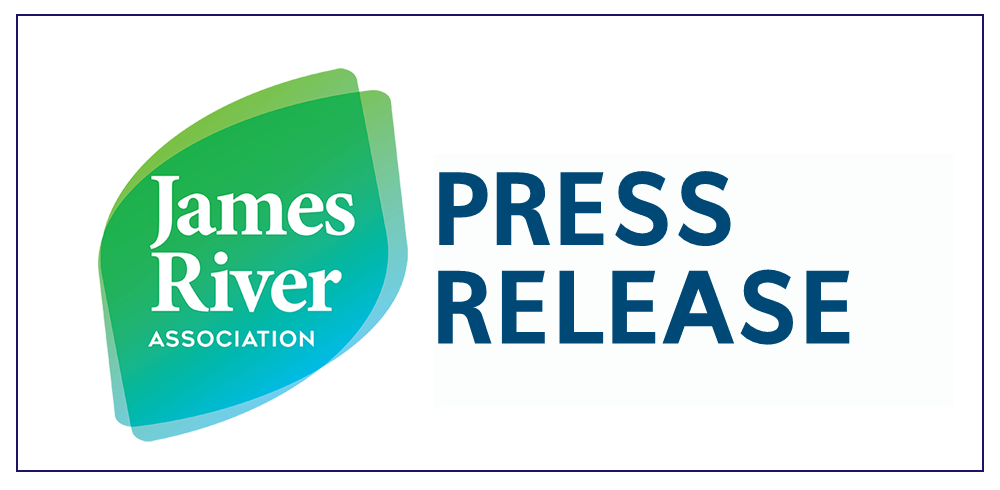PRESS RELEASE
FOR IMMEDIATE RELEASE:
Monday, April 20, 2020
CONTACT:
Erin Hillert
Marketing & Communications Manager
James River Association
ehillert@thejamesriver.org
608.239.2644
Michelle Stoll
Director of Public Information
Virginia Department of Forestry
michelle.stoll@dof.virginia.gov
434.220.9098
James River Buffer Program Plants 81,700 Trees
The James River Buffer Program successfully planted 81,700 trees during their spring planting season, beginning on March 13 and ending on April 3rd. Planting sites included properties in Albemarle, Amherst, Appomattox, Buckingham, Cumberland, Fluvanna, Nelson, and Nottoway Counties.
The Buffer Program, launched in July 2019 through support from Virginia Environmental Endowment (VEE), is a partnership between the James River Association (JRA) and the Virginia Department of Forestry (VDOF), with additional support from Thomas Jefferson, Monacan, Peter Francisco Soil and Water Conservation Districts, and Virginia Outdoors Foundation. The goal of the program is to work with landowners across the middle James Watershed to restore or create forest buffers that improve the quality of local waterways. Over 900 acres of “riparian forested buffers” will be planted or restored.
Riparian buffers along the James Rivers include the native trees, shrubs, and other vegetation that contribute to improved water quality. Buffers reduce pollution from stormwater runoff, stabilize stream banks, reduce erosion and impacts of flooding, provide shade to cool streams, and provide habitat and food for fish and wildlife.
“The importance of trees and forests for protecting water quality cannot be overstated,” said State Forester Rob Farrell. “Nearly half of Virginia’s drinking water comes from forestland – much of which is family owned. We are pleased with the momentum of the Buffer Program as well as the opportunity to work directly with Virginia’s landowners.”
JRA has completed 100 acres toward their 242 buffer acreage goal, which is 41% progress to date. JRA plans to install 173 more buffer acres on priority parcels by the end of 2021. In addition, VDOF has completed 155 acres toward their 700 acre goal, which is 22% progress to date. VDOF plans to install 544 more buffer acres on parcels by the end of 2021.
The Buffer Program’s goals align with Virginia’s Chesapeake Bay Cleanup Plan, which calls for an additional 26,000 acres of forested buffers within the James River watershed by 2025. To help, the 2021-2022 State Budget, as passed by the General Assembly, includes $95 million for conservation practices on farmland throughout Virginia, including planting and protecting streamside buffers.
“Healthy streams are vital for a healthy James River, and restoring streamside forest buffers is the most cost effective way to improve streams,” said Bill Street, CEO for the James River Association. “We are encouraged by the response of landowners to the James River Buffer Program and the progress we have made in the first year. These projects will improve both farming operations and the James River.”
To find out more about the program and see if you are eligible, go to http://www.jamesriverbuffers.org.

ABOUT THE JAMES RIVER ASSOCIATION: The James River Association is a member-supported nonprofit organization founded in 1976 to serve as a guardian and voice for the James River. Throughout the James River’s 10,000-square mile watershed, the James River Association works toward its vision of a fully healthy James River supporting thriving communities. The James River Association believes that “when you change the James, the James changes you”. With offices in Lynchburg, Richmond, Williamsburg, and Scottsville, the James River Association is committed to protecting the James River and connecting people to it. For more information visit www.thejamesriver.org.

ABOUT THE VIRGINIA DEPARTMENT OF FORESTRY: The Virginia Department of Forestry (VDOF) protects and develops healthy, sustainable forest resources for Virginians. With nearly 16 million acres of forestland and more than 108,000 Virginians employed in forestry, forest products and related industries, Virginia forests provide an overall economic output of more than $21 Billion annually. Headquartered in Charlottesville, VDOF has forestry staff members assigned to every county to provide citizen service and public safety protection across the Commonwealth, which it’s been doing now for more than 100 years. For more information visit www.vdof.virginia.gov.

